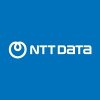L2 Network Engineer
90+ L2 Network Engineer Interview Questions and Answers

Asked in HCLTech

Q. What is the preferred link for an OMP route: Internet or MPLS?
The best link of OMP route depends on the specific needs and requirements of the network.
Internet may be a better option for cost-effectiveness and flexibility, but MPLS may offer better reliability and security.
Consider factors such as bandwidth, latency, traffic volume, and application requirements.
Evaluate the pros and cons of each option before making a decision.
For example, if the network requires low latency and high reliability, MPLS may be the better choice.
On the oth...read more

Asked in HCLTech

Q. What are the differences between BGP and IBGP?
BGP is used for routing between different autonomous systems, while IBGP is used for routing within the same autonomous system.
BGP (Border Gateway Protocol) is an exterior gateway protocol used for routing between different autonomous systems.
IBGP (Internal Border Gateway Protocol) is used for routing within the same autonomous system.
BGP is used to exchange routing information between different autonomous systems (ASes) on the internet.
IBGP is used to distribute routing info...read more
L2 Network Engineer Interview Questions and Answers for Freshers

Asked in Orange Business

Q. what is policy ? what is basic step to create policy ?
Policy is a set of rules or guidelines that dictate how a network should be managed and used.
Identify the purpose of the policy
Define the scope of the policy
Determine the target audience
Create the policy document
Communicate the policy to all stakeholders
Enforce the policy and regularly review and update it
Asked in Websurfer

Q. Switch: A switch is used to provide additional port, ex-panding the capability of the router. A network switch learns the association between the MAC addresses of connected devices and its switched ports. Route...
read moreA switch expands the number of ports on a network, a router directs traffic, and a modem provides internet access.
Switches learn MAC addresses to direct traffic efficiently
Routers manage traffic between devices on a network
Modems connect a network to the internet
Some ISPs provide hybrid modem/router devices

Asked in HCLTech

Q. Can we create SVI in L2 switch? IF not why
No, SVIs cannot be created in L2 switches.
SVI stands for Switched Virtual Interface.
It is a virtual interface that represents a VLAN on a Layer 3 switch.
L2 switches operate at Layer 2 of the OSI model and do not support routing or Layer 3 functionality.
SVIs are used for routing between VLANs, which is a Layer 3 function.
L2 switches can only create VLANs and assign ports to them for Layer 2 switching.
To enable Layer 3 functionality, a Layer 3 switch or a router is required.

Asked in HCLTech

Q. What is TLOC in Viptela SDWAN, and why is it used?
TLOC in Viptela SDWAN stands for Transport Locator and is used to identify the physical or virtual location of a device in the network.
TLOC is a unique identifier assigned to each device in the SDWAN network.
It helps in determining the optimal path for traffic routing.
TLOCs can be based on various parameters such as interface, IP address, or VPN.
They are used to define the connectivity between different sites in the network.
TLOCs enable efficient traffic steering and load bal...read more
L2 Network Engineer Jobs




Asked in HCLTech

Q. Why is BGP important in relation to OSPF?
BGP and OSPF are both routing protocols, but BGP is used for inter-domain routing while OSPF is used for intra-domain routing.
BGP is important in respect of OSPF because it allows for communication between different autonomous systems (AS)
BGP is used to exchange routing information between different AS, while OSPF is used within a single AS
BGP is used to determine the best path for traffic to take between different AS, while OSPF is used to determine the best path within a si...read more

Asked in Orange Business

Q. what is ospf ? explain types of packet in ospf ?
OSPF is a routing protocol used in IP networks to distribute IP routing information.
OSPF stands for Open Shortest Path First
It is a link-state routing protocol
OSPF packets include Hello, Database Description, Link State Request, Link State Update, and Link State Acknowledgement
Hello packets are used to establish and maintain neighbor relationships
Database Description packets are used to exchange information about the contents of the link-state database
Link State Request packe...read more
Share interview questions and help millions of jobseekers 🌟


Asked in Orange Business

Q. What is the difference between an L2 and L3 switch?
L2 switches operate at the data link layer and forward packets based on MAC addresses, while L3 switches operate at the network layer and forward packets based on IP addresses.
L2 switches operate at the data link layer, while L3 switches operate at the network layer.
L2 switches forward packets based on MAC addresses, while L3 switches forward packets based on IP addresses.
L2 switches are typically used for local network segmentation and VLANs, while L3 switches are used for r...read more

Asked in Orange Business

Q. What are the basic steps of network troubleshooting?
The basic steps of network troubleshooting involve identifying the problem, gathering information, isolating the issue, testing solutions, and implementing fixes.
Identify the problem by gathering information from the user or monitoring tools
Isolate the issue by checking connectivity, configurations, and logs
Test potential solutions by implementing changes or using diagnostic tools
Implement fixes by applying changes to the network devices or configurations
Verify the resolution...read more

Asked in DXC Technology

Q. How would you perform an IOS upgrade with only 10 minutes remaining in the planned engineering window?
Use pre-staged image and fast transfer methods to achieve IOS upgrade within 10 minutes.
Pre-stage the image on the device before the upgrade window
Use fast transfer methods like TFTP or FTP to transfer the image quickly
Ensure all necessary configurations are saved and backed up before the upgrade
Have a rollback plan in case of any issues during the upgrade

Asked in Orange Business

Q. what is stp ? what is port fast in stp ?
STP stands for Spanning Tree Protocol. Port Fast is a feature in STP that allows a port to bypass the listening and learning states.
STP is a protocol used to prevent loops in a network by blocking redundant paths
It works by electing a root bridge and calculating the shortest path to it
Port Fast is a feature that allows a port to immediately transition to forwarding state, bypassing the listening and learning states
It is used on ports that are not connected to other switches t...read more

Asked in Orange Business

Q. what is vlan ? how many types of vlan ?
VLAN stands for Virtual Local Area Network. It is a logical grouping of devices on a network based on function, project, or application.
VLANs allow network administrators to segment a network into smaller, more manageable groups.
Each VLAN is a separate broadcast domain, which means that broadcasts sent by a device in one VLAN are not seen by devices in other VLANs.
There are two types of VLANs: port-based VLANs and tag-based VLANs.
Port-based VLANs assign ports on a switch to a...read more

Asked in Tikona Infinet

Q. What are the states in Border Gateway Protocol (BGP) and Open Shortest Path First (OSPF), and how do they function?
BGP and OSPF have distinct states that manage their routing processes and neighbor relationships.
BGP has 6 states: Idle, Connect, Active, OpenSent, OpenConfirm, Established.
OSPF has 5 states: Down, Init, Two-Way, ExStart, Exchange, Loading, Full.
In BGP, the Established state indicates a successful session with neighbors.
In OSPF, the Full state means that the router has exchanged all routing information with its neighbors.
Asked in Websurfer

Q. What is switch, router and modem?
Switch, router, and modem are networking devices used to connect devices and facilitate communication over a network.
Switch: Connects devices within a local area network (LAN) and forwards data packets between them. Example: Cisco Catalyst switch.
Router: Connects multiple networks together and routes data packets between them. Example: Cisco ISR router.
Modem: Converts digital data from a computer into analog signals for transmission over telephone lines (DSL modem) or vice ve...read more

Asked in APH Networks

Q. Do you have experience with monitoring tools?
Yes, I have experience with monitoring tools.
I have experience with tools such as SolarWinds, Nagios, and PRTG.
I am familiar with setting up alerts and notifications based on specific thresholds.
I have used monitoring tools to troubleshoot network issues and identify performance bottlenecks.
I am comfortable creating custom dashboards and reports to provide visibility into network health.
I have experience with both on-premise and cloud-based monitoring solutions.

Asked in Orbit Techsol

Q. What is Bgp,ospf,valn,trunk,router intigration & troubleshooting process
BGP, OSPF, VLAN, trunking, router integration, and troubleshooting processes are key aspects of network engineering.
BGP (Border Gateway Protocol) is used to exchange routing information between different autonomous systems.
OSPF (Open Shortest Path First) is a routing protocol used within a single autonomous system.
VLAN (Virtual Local Area Network) is used to segment a network into multiple logical networks.
Trunking is the process of carrying multiple VLANs over a single netwo...read more

Asked in Microscan Computers

Q. how ospf work , stp type and diffvernaces , why vlan create
Explanation of OSPF, STP types and VLAN creation.
OSPF is a link-state routing protocol that uses Dijkstra's algorithm to calculate the shortest path.
STP (Spanning Tree Protocol) prevents loops in a network by blocking redundant paths.
STP types include PVST (Per-VLAN Spanning Tree), RPVST+ (Rapid PVST+), and MSTP (Multiple Spanning Tree Protocol).
VLANs (Virtual Local Area Networks) are created to segment a network into smaller broadcast domains and improve network performance....read more


Q. In one OSPF router, how do you add two ISP links?
To add two ISP links in one OSPF router, we need to create two virtual links.
Create two virtual links with the respective ISP router IDs
Assign the virtual links to the OSPF process
Configure the virtual links with the appropriate IP addresses and subnet masks
Ensure that the virtual links are enabled
Verify the OSPF neighborship with the ISP routers

Asked in Tikona Infinet

Q. What is the Border Gateway Protocol (BGP) and can you describe it in detail?
BGP is a standardized exterior gateway protocol used to exchange routing information between autonomous systems on the internet.
BGP is classified as a path vector protocol, which maintains the path information that gets updated dynamically as the network topology changes.
It operates over TCP (port 179) to ensure reliable transmission of routing information.
BGP uses attributes like AS-path, next-hop, and local preference to make routing decisions.
Example: If AS1 wants to send ...read more

Asked in Tikona Infinet

Q. What is your understanding of the MPLS (Multiprotocol Label Switching) protocol?
MPLS is a high-performance networking protocol that directs data from one node to another based on short path labels.
MPLS operates between Layer 2 (Data Link) and Layer 3 (Network) of the OSI model.
It uses labels to make data forwarding decisions, improving speed and efficiency.
MPLS supports multiple protocols, including IP, ATM, and Frame Relay.
It enables traffic engineering, allowing for optimized bandwidth usage and reduced congestion.
Example: MPLS can prioritize voice tra...read more

Asked in Aerial Telecom Solutions

Q. What is the difference between a Router and a Switch?
Routers operate at Layer 3 of the OSI model and make decisions based on IP addresses, while switches operate at Layer 2 and make decisions based on MAC addresses.
Routers operate at Layer 3 of the OSI model, while switches operate at Layer 2.
Routers make decisions based on IP addresses, while switches make decisions based on MAC addresses.
Routers connect different networks together, while switches connect devices within the same network.
Routers use routing tables to determine ...read more

Asked in APH Networks

Q. What is STP ,How its work
STP stands for Spanning Tree Protocol. It is a network protocol that prevents loops in a network topology.
STP is used to prevent network loops by creating a logical tree structure of the network.
It works by selecting a root bridge and disabling redundant paths to prevent loops.
STP uses Bridge Protocol Data Units (BPDUs) to communicate with other switches and determine the best path to the root bridge.
STP has several variants, including Rapid Spanning Tree Protocol (RSTP) and ...read more

Asked in Reliance Industries

Q. What is vkan stack and ospf l2 l1 switch router and manily focus ccna course
VKAN stack and OSPF L2 L1 switch router are networking protocols covered in CCNA course.
VKAN stack is a proprietary protocol used for virtualization in data centers.
OSPF (Open Shortest Path First) is a routing protocol used for efficient communication between routers.
L2 and L1 refer to the layers in the OSI model, with L2 being the data link layer and L1 being the physical layer.
Switches and routers are networking devices used for forwarding data packets.
CCNA (Cisco Certified...read more

Asked in CompuCom

Q. How would you handle a multi-tasking environment?
I prioritize tasks based on urgency and importance, use time management techniques, and communicate effectively with team members.
Prioritize tasks based on urgency and importance
Use time management techniques such as creating to-do lists and setting deadlines
Communicate effectively with team members to ensure tasks are completed efficiently
Stay organized and focused to avoid feeling overwhelmed by multiple tasks

Asked in ITSource Technologies

Q. What is LAN & WAN ?
LAN stands for Local Area Network, which connects devices within a limited area. WAN stands for Wide Area Network, which connects devices over a large geographical area.
LAN is typically used in homes, schools, or small businesses.
LAN has high data transfer speeds and low latency.
Examples of LAN technologies include Ethernet and Wi-Fi.
WAN connects devices across cities, countries, or continents.
WAN has slower data transfer speeds compared to LAN due to longer distances.
Example...read more

Asked in Wipro

Q. What are OSPF DR and BDR?
OSPF DR and BDR are routers elected to manage communication within a multi-access network.
DR stands for Designated Router and BDR stands for Backup Designated Router.
They are elected by OSPF routers on a multi-access network to manage communication.
DR and BDR are responsible for maintaining the topology database and forwarding updates to other routers.
They reduce the amount of OSPF traffic on the network by acting as a central point of contact.
If the DR fails, the BDR takes o...read more

Asked in Delhivery

Q. What is your level of knowledge regarding Fortinet firewalls?
I have extensive knowledge of Fortinet firewalls, including configuration, management, and troubleshooting.
Familiar with FortiGate firewall models and their features, such as VPN, IPS, and application control.
Experience in configuring security policies and NAT rules to control traffic flow.
Proficient in using FortiManager for centralized management of multiple FortiGate devices.
Knowledge of FortiAnalyzer for logging and reporting to monitor network security events.
Hands-on ex...read more

Asked in NTT Data

Q. What is the use of routing, and what are its applications?
Routing is the process of selecting the best path for network traffic to reach its destination.
Routing helps in directing network traffic efficiently
It determines the best path for data packets to travel from source to destination
Routing protocols like OSPF, BGP, and EIGRP are used to exchange routing information
Routing tables are used to store information about network paths
Dynamic routing adjusts to network changes automatically

Asked in HCLTech

Q. What is a network?
A network is a collection of interconnected devices and systems that allow for the sharing of resources and information.
A network is made up of nodes, such as computers, servers, routers, and switches.
These nodes are connected through various communication channels, such as wired or wireless connections.
Networks enable the transmission of data, voice, and video between connected devices.
Networks can be local (LAN) or wide area (WAN), depending on the geographical scope.
Exampl...read more
Interview Experiences of Popular Companies





Top Interview Questions for L2 Network Engineer Related Skills



Reviews
Interviews
Salaries
Users


















